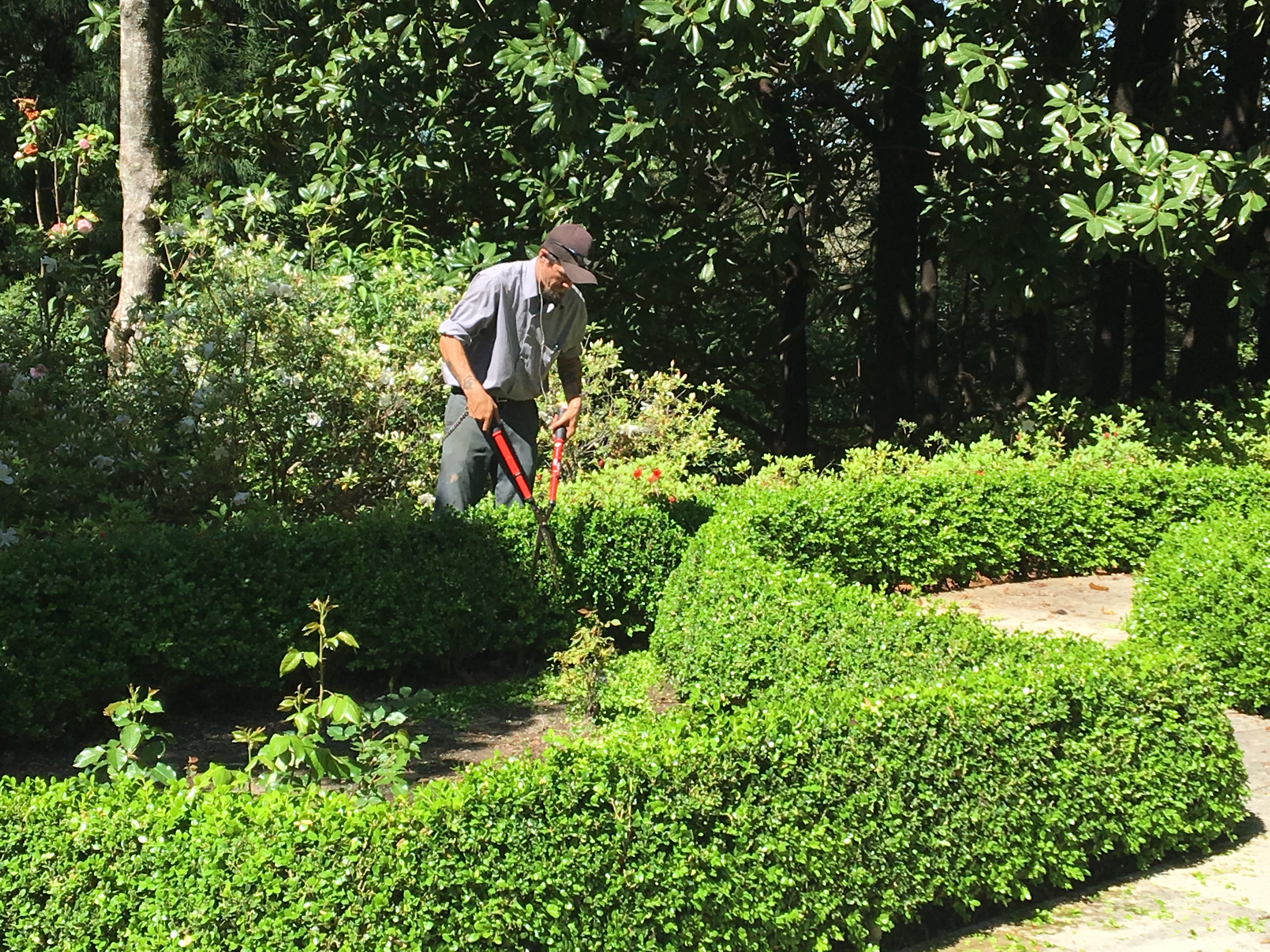Protecting Boxwoods from blight, fungus and more by sterilizing pruners
Boxwoods are the target of an increasing number of diseases, some of which are curable while others are not. Some are so severe you can’t replant another Boxwood in the same area for years.
While we can’t give you a diagnosis, prognosis or treatment plan here and now, we can tell you how to minimize the chances of spreading disease and fungus from plant to plant. Just as you can transmit disease from person to person with medical instruments, you can also transmit disease and fungus with pruners, shears and even shovels.
Sterilizing your garden instruments is critical if you suspect fungus or disease. Pruning a diseased plant, then moving to the next plant without sterilizing your pruners (or shears or shovels), will certainly transmit the disease. We use a strong solution of 50% bleach and 50% water in a chemical-grade spray bottle.
Use the bleach-water solution to spray your hand pruners, shears, shovels and mower blades (yes, you can spread fungus in your lawn, too). After spraying your instrument, let it sit for a minute and wipe it dry. If we are pruning suspect plants, we sterilize after every obviously-infected branch. Frankly, the entire plant may already be infected but it’s better to be safe than sorry. We also sterilize before moving to the next plant as well. It can be a slow, arduous process, but not sterilizing will likely cause disease and fungus to spread rapidly.
Two Notes about Bleach:
All bleach is not created equal – Nope, it’s not. Read the Label: Use only 8.25% sodium hypochorite. Do not use scented bleach, low-splash bleach, or any bleach that doesn’t have the strength written on the label.
Bleach does lose its effectiveness after 3-5 months. If you have a jug that’s been sitting under the sink for a year, it’s not going to sterilize anything. Pour it out and buy a new jug.
Happy gardening.




